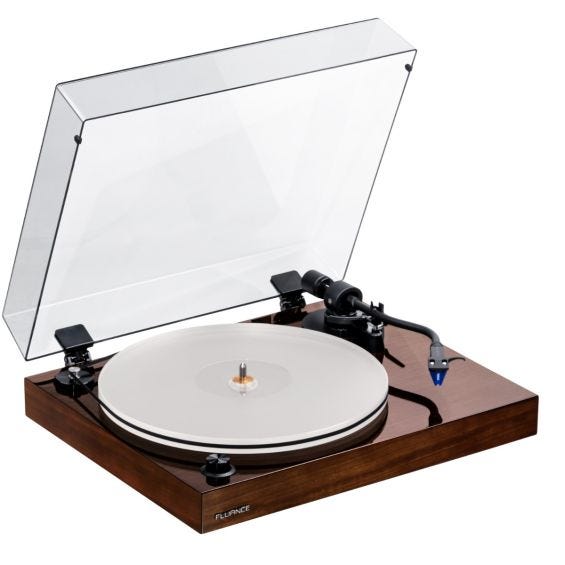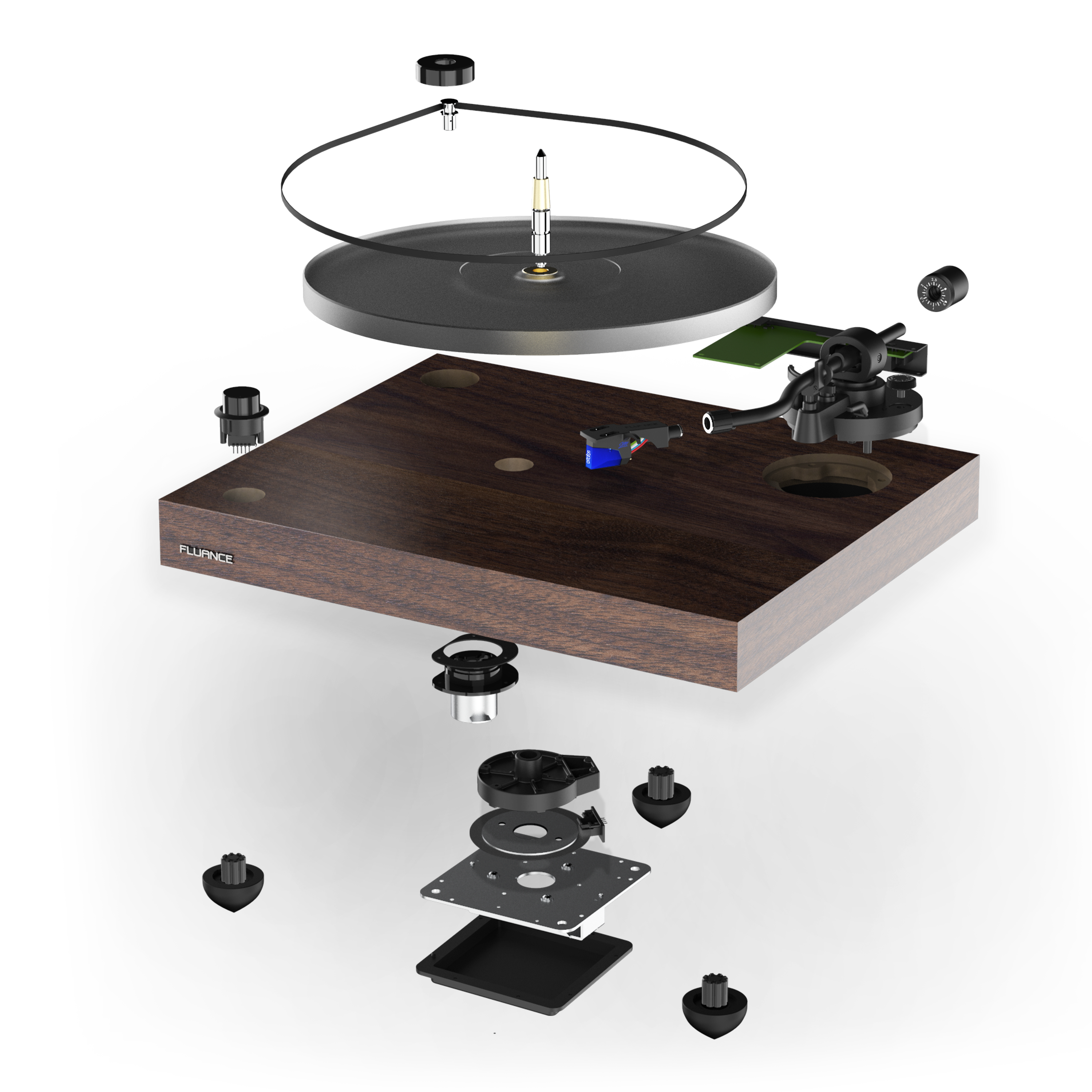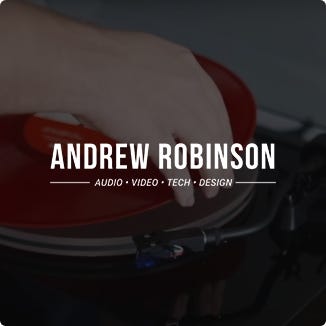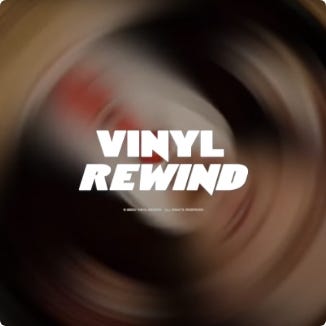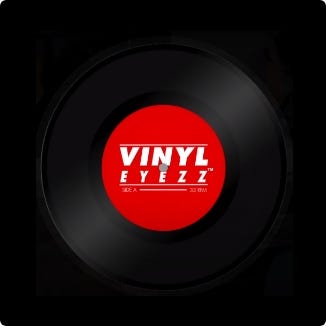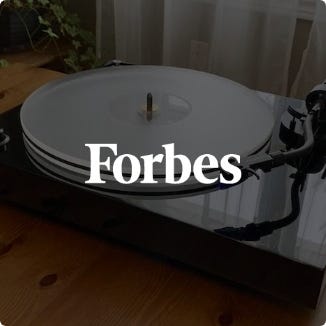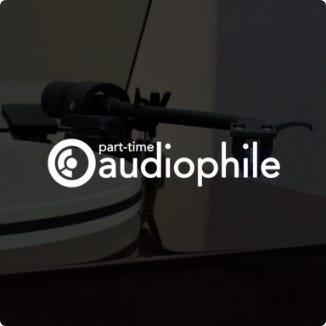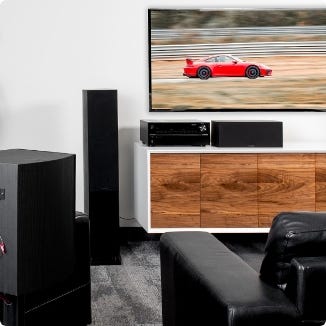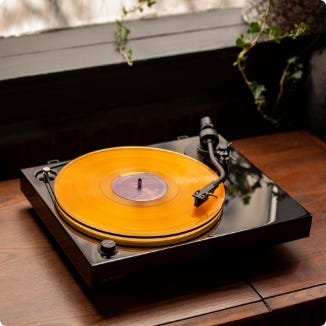RT85 Reference High Fidelity Vinyl Turntable
Record Player with Ortofon 2M Blue Cartridge, Acrylic Platter, Speed Control Motor, High Mass MDF Wood Plinth, Vibration Isolation Feet
Color: Natural Walnut
Model:

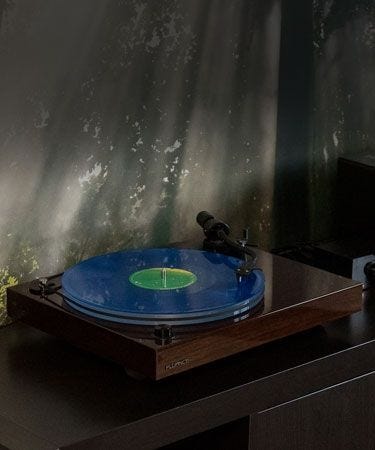
PURE ANALOG PERFORMANCE
The definitive vinyl record listening experience for beautifully warm and natural music, transporting you into the center of the performance
EXCEPTIONAL MUSICAL ACCURACY
Immerse yourself in the detailed high resolution sound of the Ortofon 2M Blue elliptical cartridge delivering improved linearity, higher channel separation and reduced distortion
HIGH DENSITY ACRYLIC PLATTER
The greater mass of the acrylic platter damps unwanted vibrations resulting in a more 3-dimensional sound with tighter bass, a fuller midrange, and overall improved clarity
SPEED CONTROL FOR PRECISION PLAYBACK
The isolated motor prevents unwanted vibrations and noise while the speed control mechanism ensures consistent platter velocity (0.07% Wow/Flutter)
HIGH MASS MDF WOOD PLINTH
Revel in the gorgeously crafted cabinet with real wood finish and a highly precise metal platter with adjustable resonance damping feet, ensuring superior isolation from unwanted micro-vibrations (Note: phono preamp not included)
Specifications
| Cabinet Specifications | |
|---|---|
| Cabinet Material | MDF |
| Finish | High Gloss Walnut Real Wood Veneer |
| Dust Cover | Yes - Tinted |
| Turntable Specifications | |
| Drive System | Belt Drive |
| Motor | DC Motor with Servo Controller Analyzes motor speed 500 times/sec |
| Motor Isolation | Under-mounted 7-point silicone isolation with decoupling isolation ring |
| Speed | 33 1/3 RPM, 45 RPM (78 RPM - No) |
| Speed Variation | 0.10% |
| Wow and Flutter | 0.07% |
| Signal-to-Noise Ratio (Weighted) | 76 dB |
| Signal-to-Noise Ratio (Unweighted) | 65 dB |
| Platter | Acrylic |
| Diameter of Platter | 12 inches (30 cm) |
| Weight of Platter | 3 lb (1.56 kg) |
| Height of Platter | 0.62 inches (16 mm) |
| Auto-Stop | Yes |
| Fully Automatic | No |
| Turntable Mat | Not Required |
| Tonearm Specifications | |
| Tonearm Type | Static Balanced, S-Type |
| Supported Cartridge Weight | 0.18 – 0.25 oz (5.0 – 7.5 g) |
| Counterweight | Yes – 3.60 oz (102 g) - Adjustable |
| Anti-skating Adjustment | Yes – Adjustable |
| Pivot Bearing | Yes |
| Cueing Lever | Yes |
| Tonearm Material | Aluminum |
| Tonearm Wire | 36 AWG Litz Cable / 7 Strand |
| Effective Tonearm Mass | 0.97 oz (27.5 g) |
| Overhang | 0.76 inches (19.2 mm) |
| Effective Tonearm Length | 8.82 inches (224 mm) |
| Headshell Mount | H-4 Bayonet Mount |
| Headshell Weight | 0.35 oz (9g) |
| Cartridge Specifications | |
| Cartridge Type | Moving Magnet (MM) |
| Cartridge Model | Ortofon: 2M Blue |
| Replacement Stylus | Stylus 2M Blue |
| Stylus | 0.3 x 0.7 mil |
| Cantilever | Aluminum |
| Mount | Half-inch |
| Frequency Response | 20 - 20,000 Hz (+2/-1 dB) |
| Frequency Range | 20 - 25,000 Hz (-3 dB) |
| Channel Separation | 25 dB at 1 kHz |
| Channel Balance | 1.5 dB @ 1 kHz |
| Load Impedance/Capacitance | 47k Ohms/150 - 300 pF |
| Output Voltage | 5.5 mV |
| Cartridge Weight | 0.25 oz (7.2g) |
| Cartridge Height | 0.71 inches (18 mm) |
| Vertical Tracking Angle | 20° (Non-Adjustable) |
| Rubber Belt Specifications | |
| Rubber Belt Design | Continuous loop (joint-less) |
| Width | 0.17 inches (4.5 mm) |
| Length | 36.02 inches (915 mm) |
| Thickness | 0.02 inches (0.6 mm) |
| Output Specifications | |
| Connector | RCA (Gold-plated) |
| Phono Preamp | No - Separate Phono Preamp Required |
| Phono Output | 5.5 mV |
| Phono Bypass | N/A |
| Line Output | N/A |
| Ground Terminal | Yes |
| Power Specification | |
| Input | 100–240 V AC (50/60 Hz) |
| Output | 12 V / 500 mA |
| Consumption | 1.5 W |
| General Specifications | |
| Dimensions | 6 (+/-0.5) x 16.5 x 14.25 inches / 14.6 (+/-1.25) x 41.9 x 36.2 cm (HxWxD) |
| Unit Weight | 16.76 lb (7.6 kg) |
| Operating Temperature | 41° to 95°F (5° to 35°C) |
| Wireless Playback | No (Requires Bluetooth or WiFi transmitter connected via RCA connection to transmit audio wirelessly) |
| Fluance Speaker Size Comparison Chart | |
| Certifications | FCC Certified, RoHS, CUL/UL |
| UPC | 061783270523 |
| What's Included | |
What's Included
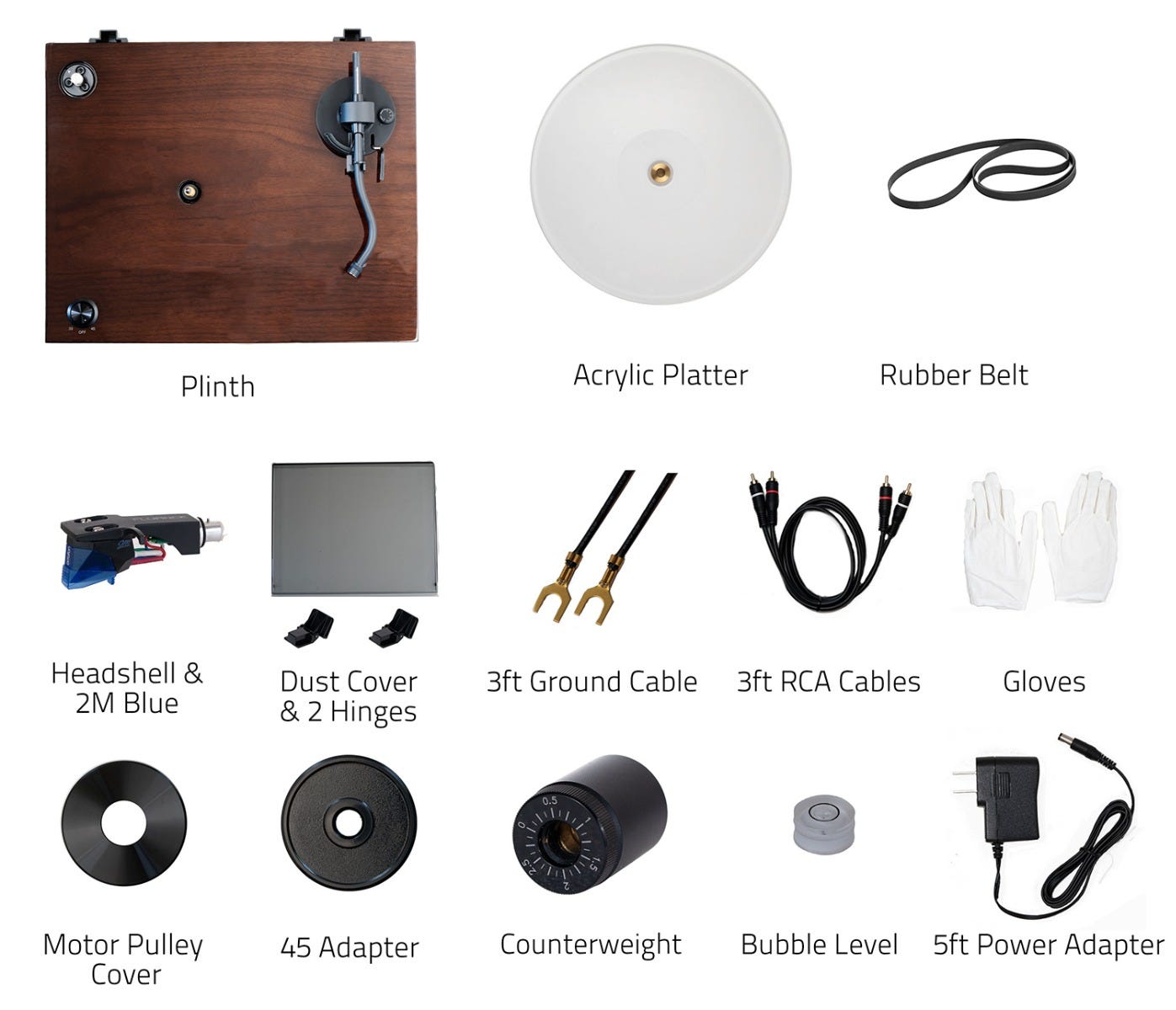
Frequently Asked Questions
If you intend to use your Reference series turntable with powered bookshelf speakers, such as our Ai41 model, a preamp will be required. The preamp will boost the signal to line level (similar to a headphone jack) so you can play it on speakers with RCA or AUX inputs.
If you have a home theater or stereo receiver/amplifier, you will need a preamp if the amplifier does not have a PHONO input. If you have a PHONO input, you may have a preamp already built in. Be sure to refer to the manufacturer’s specifications or manual for confirmation!
This design choice was made with a number of factors in mind. The main reason was to separate electronics from the turntable’s signal path to maintain the purity of the analog signal. Many listeners also like to customize their listening experience and choose specific components such as preamps based on unique sonic qualities.
Using separate components also allows for optimization of cartridge and phono stage compatibility. If you upgrade your cartridge in the future, you can pair it with an optimal phono preamp to maximize performance and achieve the sound profile you desire.
We want our users to experience music the way it was meant to be heard and have pulled out all the stops for the new Reference series. These new turntables include a servo belt drive motor.
What does this mean for you?
It means that you have a sensor checking and adjusting the speed of the motor up to 500 times a second to make sure the speed of your turntable is consistent with no manual adjustments, bringing wow and flutter under 0.07%!
| What's new! | What does it mean? |
|---|---|
| The motor is located away from the platter | Allows the use of an acrylic platter, reduced rumble at the stylus. |
| 90pF RCA cables | Upgraded RCA cables with higher capacitance to protect and maintain the purest signal path. |
| No internal preamp | Provides a clean signal, with no electronics in the path for increased audio quality. |
| Spring loaded adjustable feet with built-in isolation |
Allows the turntable to be leveled on any surface, bubble level included. Spike-shaped feet prevent outside vibrations from affecting audio quality. |
| Servo controlled motor | Improves speed consistency and reduces wow and flutter by checking the speed up to 500 times per second! |
| Ortofon Stylus | All Reference turntables are compatible with Ortofon OM10, Blue, and Red Cartridges. |
| 102g adjustable counterweight |
Heavier counterweight to accommodate the Ortofon stylus. More diverse upgrade options. |
| Compatible with an acrylic platter | Heavier, denser material reduces resonance and improves speed consistency. |
| Customizable | All Reference turntable components are compatible with each other giving you a clear upgrade path! Only RT85N is compatible with Nagaoka MP110 due to differences in the vertical tracking angle. |
Reference turntables are compatible and shipped with moving magnet cartridges such as the Ortofon OM10, 2M Red, and 2M Blue, giving you the ability to customize your system for top-tier performance. Cartridges must be between 3.5 to 7.5 grams to be set correctly. Due to a different vertical tracking angle, the Nagaoka MP110 is compatible with the RT85N only.
An amplifier is only needed if you’re connecting the turntable to passive speakers such as the Signature Series Bookshelf Surround Speakers.
If you’re looking for an option without a separate amplifier, the Ai41 Powered Bookshelf speakers fit the bill. With the Ai41, all you need to do is connect the included RCA cables to your preamp, then to the speakers, and you’re ready to listen to the music the way it was meant to be heard.
All Fluance Reference turntables are sold with an Ortofon cartridge included.
We do know that our users love to customize their turntables, and there are many options out there, so we designed our Reference series to have extensive upgrade potential!
Ortofon 2M Blue: Stylus Profile: The 2M Blue features a nude elliptical stylus, which is known for providing a good balance between tracking ability and record wear. Output: It has a slightly higher output compared to the Nagaoka MP-110, which means it produces a stronger signal. Sound Characteristics: Known for its clear and detailed sound reproduction, the 2M Blue is often praised for its precision and accuracy. Nagaoka MP-110:
Stylus Profile: The MP-110 also has an elliptical stylus, designed for good tracking and reduced record wear.
Output: It generally has a slightly lower output compared to the 2M Blue.
Sound Characteristics: The MP-110 is often noted for its warm and smooth sound signature, providing a more vintage or analog feel.
Tonearm Height: The tonearm is .5mm higher on the RT85N to accommodate for the height of the Nagaoka Cartridge and VTA which differ greatly from the 2M cartridges (31° vs 20°). While we do not recommend it, the MP-110 can be installed on the standard RT85 the vertical tracking angle may be outside of the required specifications and performance less than optimal.
We do know that our users love to customize their turntables, and there are many options out there, so we designed our Reference series to have extensive upgrade potential!




